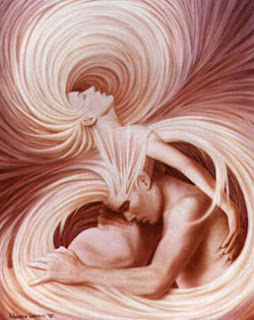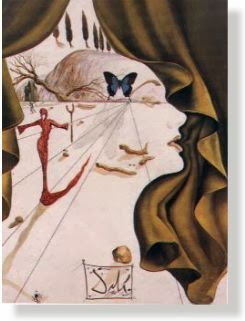Why do mothers die or are they absent in fairy tales?
By: Hellen Reis Mourão
The stepmothers contribute to the evolution in the
heroine’s journey.
The relationship between `mother and daughter´ is
really intense, both the dedication and affection, as much as struggles and
conflicts. The fairy tales are filled with registers about these stories, not
only in relation to conflicts and difficulties, also the solutions between
dilemmas and generations.
It is quite common to see the most famous heroines
such as Cinderella, Snow White, Sleeping Beauty and Rapunzel in several
disputes and conflicts with the mother or stepmother. However, it is through
these disagreements that the heroine becomes more developed and mature as a
woman.
The stories which describe the relationship
"mother and daughter" reveal to us the woman who develops your own
personality and identity, while a feminine human being, from her relationship
with her mother. And when the mother figure is absent (whether by death or
absence of feelings), this woman develops an insecurity about herself, often it
falling into the trap of her animus (male side) and maching to it. Being equal
to animus, she harms her relations, in a self-sabotage behavior, because this
masculine side tends to separate the woman from her own life and leading her to loneliness.
But, before starting the analysis of this sensitive
relationship, it is necessary to observe the girl's dynamic, since her
childhood.
The earliest period of childhood, most children (both
girls and boys), live in an archaic identification relationship with their
mother. If we observe the girls, one can notice that they speak with their
dolls like their mothers speak with them, closing to imitate their mother's
voice.
At that stage, the play of "motherhood" with
the dolls is very common for the majority of girls. As they grow up, those who
had a "positive" mother model often imitate it. According to the
German analytical psychotherapist Marie-Louise Von Franz, this creates a
peaceful atmosphere without conflict, however, at the same time it is bad for
the girl's individuation process, so that she is unable to become different
from her mother.
Therewith, there is an unknown in this issue. If there
is no mother around the woman, she will probably be insecure in relation to her
femininity, being also an easy prey for her animus. But with a very kind
mother, she will become just an extension from her mother and her maternal
ancestors.
So, how to resolve this impasse?
The Wicked Stepmother encourages the heroine to become
more mature.
Generally, the heroine’s journey starts
with the princess's birth and the subsequent mother's death, it is followed by
the stepmother's arrival or the appearance of some evil witch. In famous
stories such as Snow White and Cinderella, there is the classic theme of the
stepmother; in Sleeping Beauty and Rapunzel a witch appears and pursues the
heroine.
In psychological terms, the role of a stepmother and a
witch is to emphasize the negative side of motherhood. After pursuing the
heroine and almost lead her to death, this negative mother starts an action
that develops the deepest female personality.
There is
a kind of `maternal wickedness´ in nature. The fox bites its puppy when it
reaches a certain age and needs to become independent and free. Mothers that
still have a good maternal instinct keep the children that are too attached
away from her, like a wild animal. However, it is noteworthy that this evil
instinct is positive. Currently, our society, guided by the patriarchal
principle, judges this female behavior as immoral and because of that there are
many childish adults that are still tied to Mommy's apron strings.
Why do mothers usually die in fairy tales?
Nowadays mothers have an excessive sense
of duty and obligation in relation to children.
They just think like a `good mother´ that most closely
resembles a reaction of the woman's animus, with rules and judgments instead of
an appropriate and instinctive reaction of her feminine.
In fairy
tales there is the "good mother" figure who teaches lessons, love and
human warmth to the heroine. In Cinderella, this "positive mother"
offers advices to her, so she can become a better person, and when the mother
dies it grows a tree on her grave that helps the girl. In Russian fairy tale,
The Beautiful Vasilisa receives an inheritance after her mother's death, a doll
that also helps the little girl. These fairy tales always show us that a
spiritual inheritance from the ‘good mother’ always stays in the woman’s
spirit.
The major lesson about these stories is that the
mother does not need to worry about the dark side of her motherhood. All the
love and care that is given to the daughter will serve as a guide in her
journey, assisting her.
However,
the good mother usually dies or disappears from the fairy tales. That means
that the daughter, psychologically, should not be identified with the mother
figure anymore, even if a core positive relationship exists between both. The
"death" of this good mother is the beginning of the woman's
individuation process.
The fairy
tales show us the woman who should seek her unique way to live her life. She
needs to learn how to set limits between what is hers and what is from her
mother. The psychotherapist Von Franz mentions that, psychologically, the women
more than men tend to identify themselves with the members of their own sex.
For this reason, the fashion, for example, It´s focused massively on women, due
to the necessity to be accepted, because of that, they, more than men, suffer
to be different from their mothers and the standards set by society.
In clinical
practice, this mother-daughter fusion is often the core reason of the women's
neurotic conflicts.
The good
mother´s death means a lot in fairy tales, not only for the child, but also for
the woman.
This loss
suggests symbolically that the mother must remove the projections she made on
her daughter and accept her own creativity and feminine power.
After
all, many women try to be what they could not be in their daughter's life, not
experiencing fully their own creative potential.
Stepmother represents the rupture with the
mother
In Fairy tales, the symbolism of the
stepmother and the witch who separates the daughter from her original family,
shows us that this break is necessary for the women's development, they must
endure the projection from this terrible and negative mother, in order to not
feel guilty and an evil mother in the future.
In real life, when the woman begins to separate
psychologically from her mother and also from her origin family, she tends to
become irritated and aggressive, she starts to see the mother figure as an evil
witch. This aggressiveness is natural and understandable, because she is still
unaware of her own personality.
When the
mother takes on her negative role shown in fairy tales as the witch or
stepmother figure , it not only helps the daughter in her development, but it
also helps her to develop and expand her feminine awareness.
The
psychotherapist Von Franz explains that when the innermost human personality
begins its development, it creates an irritation in the environment that
surrounds it. And this perception disturbs the unconscious and instinctive
family order. For the psychiatrist Carl Jung, it is similar to a sheep herd
that realizes that one of its members wants to live by itself.
For this
reason, when the conflict "mother and daughter" is installed, it is a
sensitive moment, but very beneficial, because both can stop projecting their
"feminine self" on each other and assume their individuality.
Fairy tales teach
the benefits for negative side of motherhood
The feminine fairy tales emphasize the heroine who
must endure suffering and difficulties. She does not fight with dragons and
wicked witches, she only suffers and deepens in her pain and conflict searching
for self-knowledge. The woman lost this feminine force in her eagerness for
seeking it outside. It is a big confident attitude in life, an incubation
process.
The experiences about the negative side of motherhood
in fairy tales show us the wickedness as a force for women's development. If a
woman does not have these experiences
with her mother, her feminine expression will be incomplete and she will
develop a large insecurity when she becomes mother. In the moment that she needs
to use her negativity with the children to help them grow up, she may use books
and read recipes to look for what is wrong and politically incorrect. This
woman will not know how to say no to the children or impose limits, and the
worst part is that when she does it, she will use unnecessary and brutal force.
Therefore, briefly, the fairy tales teach
us that the mother must show her negative aspects to help her child's
development. When she only exposes her positive side, her offspring will have
difficulty to mature.
The reading and understanding of fairy
tales can redeem this true psychological feminine that was suffocated by influence, laws and norms of patriarchal
behavior. Instead of blaming, the woman needs to accept herself and also her
dual nature. Instead of rules and prohibitions from her mothers, it is
necessary to bring to the women the best psychological education, in order to
happen the acceptance of her feminine shadow as an ally, and not as her enemy.






Comentários
Postar um comentário